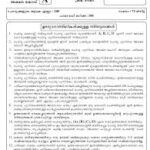Introduction: Why “That-Bites” Matters More Than You Think
We’ve all been there: you feel that familiar sting or itch, glance down, and mutter, “That-Bites” But do you really know what’s biting you? From invisible culprits to misunderstood bugs, the world of bites is far more complex—and fascinating—than it seems.
In this in-depth blog post, we’ll uncover 7 jaw-dropping truths about what’s biting you, explore prevention tips, discuss treatment options, and highlight surprising bite myths. Whether you’re a bug-bite magnet or just curious, this guide is for you.
1. That-Bites: It’s Not Always Mosquitoes
The Usual Suspects… Aren’t Always Guilty
When people think about bites, mosquitoes typically top the list. But in reality, there are numerous biting insects and arthropods that can leave you scratching your head—literally.
Common Bite Culprits You Might Overlook:
-
Fleas – Often blamed on pets but can infest homes.
-
Bed Bugs – Not just a hotel horror story anymore.
-
Midges – Tiny but savage, often mistaken for mosquitoes.
-
Spiders – Most don’t bite, but when they do, it’s serious.
-
Ants (like fire ants) – Their bite burns and itches.
-
Lice – Often go unnoticed until infestation sets in.
Pro Tip: Just because the bite resembles a mosquito mark doesn’t mean that’s what bit you.
2. That-Bites Could Be Allergic Reactions in Disguise
Not All Red Bumps Are From Bites
Did you know that many people confuse skin allergies with bites? Contact dermatitis, hives, and eczema can all mimic the appearance . That itchy welt might be from:
-
Laundry detergent
-
Plant exposure (like poison ivy)
-
Dust mites
-
Certain foods
This confusion can delay treatment and worsen the condition.
How to Tell the Difference:
-
Bites: Typically have a central puncture mark.
-
Allergies: Tend to be patchy, raised, and may spread quickly.
When in doubt, consult a dermatologist—it’s better than treating the wrong thing.
3. That-Bites: Bed Bugs Are Back and Bolder Than Ever
A Silent Epidemic in Homes and Hotels
Once nearly eradicated, bed bugs have made a massive comeback. And yes, they do bite.
Their bites often appear in:
-
Clusters or lines
-
Typically on arms, neck, or face
-
And only show up hours later
These little hitchhikers travel easily—from luggage to clothing, furniture to bedding. Worse yet, they’re hard to eliminate without professional help.
Prevention Tips:
-
Always inspect hotel beds and mattresses.
-
Keep luggage elevated and zipped.
-
Wash clothes in hot water immediately after travel.
That bites, indeed.
4. That-Bites and Itches? It Might Be Psychological
The Brain-Skin Connection
Believe it or not, some “bites” don’t exist at all—at least, not in a physical sense. Delusional parasitosis is a condition where people believe they’re infested with bugs. They’ll report:
-
Sensations of crawling
-
Itching
-
Skin sores from scratching
This condition requires psychiatric evaluation and care, but the symptoms are very real to those experiencing them.
Even without delusion, stress and anxiety can manifest as itchy skin or phantom biting sensations. This makes “that-bites” a topic not just for dermatologists, but also psychologists.
5. That-Bites: Tick Bites Can Be Silent but Dangerous
Small Bite, Big Risk
Ticks are stealthy. Their is usually painless, and by the time you notice, they’re already engorged or gone. But don’t underestimate them.
Tick-borne illnesses include:
-
Lyme Disease
-
Rocky Mountain Spotted Fever
-
Anaplasmosis
-
Babesiosis
Symptoms may not appear until weeks after the bite. Look out for:
-
Bullseye rash
-
Fever
-
Muscle aches
-
Fatigue
Early detection is critical, so check yourself thoroughly after being outdoors—especially in wooded or grassy areas.
6. That-Bites When It’s From the Ocean
Marine Bites and Stings You Never Expected
Think you’re safe in the water? Think again. The ocean has its own set of biters and stingers.
Top Oceanic Offenders:
-
Jellyfish – Cause painful welts, sometimes fatal.
-
Sea lice – Not actual lice, but larval jellyfish that sting.
-
Stingrays – Defend themselves with venomous barbs.
-
Blue-ringed octopus – Tiny but extremely venomous.
If you’ve been swimming and feel a sting or develop a rash later, you may have been bitten or stung underwater.
Prevention:
-
Wear rash guards or protective swimwear.
-
Avoid swimming during jellyfish season.
-
Shuffle your feet when walking in sandy bottoms to avoid stepping on stingrays.
7. That-Bites Isn’t Always Insects – Watch Out for Humans and Pets Too
Not All Bites Come from Bugs
The phrase takes a literal twist when we include humans and animals. Dog bites, cat scratches, and yes, even human bites can lead to serious infections.
Why These Bites Are Concerning:
-
Animal bites can introduce bacteria like Pasteurella.
-
Cat scratches may transmit Bartonella henselae (cat scratch disease).
-
Human bites can cause deep tissue infections and should never be ignored.
Quick First Aid:
-
Wash thoroughly with soap and water.
-
Apply antiseptic.
-
Seek medical help, especially for punctures or if swelling starts.
Bite Prevention 101: Protect Yourself Before It Happens
A smart defense can help you avoid that irritating moment where all you can say is: “That bites.”
General Prevention Tips:
-
Use EPA-approved insect repellent.
-
Wear protective clothing outdoors.
-
Keep homes clean and clutter-free to avoid infestations.
-
Regularly check pets for fleas and ticks.
-
Sleep in bed-bug-proof mattresses and pillow covers.
These simple steps go a long way in keeping at bay.
Myths vs. Reality: Debunking Common Bite Misconceptions
Let’s tackle a few common myths about that might be causing unnecessary worry—or leaving you vulnerable.
| Myth | Truth |
|---|---|
| All bites itch immediately | Many take hours to show up |
| You can always see the bug | Bed bugs and mites are hard to spot |
| Natural oils work better than DEET | Not proven; DEET is more reliable |
| You don’t need to see a doctor | Some bites lead to infections or allergic reactions |
Being informed means being protected.
Home Remedies and Medical Treatments for Bites
Sometimes, despite your best efforts, you still end up scratching. Here’s how to soothe those .
DIY Remedies:
-
Aloe Vera – Soothes inflammation
-
Baking Soda Paste – Reduces itching
-
Tea Tree Oil – Antimicrobial, good for bug
-
Cold Compress – Numbs the area and decreases swelling
When to See a Doctor:
-
Signs of infection (pus, fever, redness)
-
Spreading rash or swelling
-
Difficulty breathing (potential allergic reaction)
-
Bite is near the eyes or genitals
Never underestimate a small bite—it can escalate quickly.
Final Thoughts: “That-Bites” Is More Than Just a Phrase
whether from insects, pets, sea creatures, or even people—can range from mildly annoying to seriously dangerous. Understanding the who, what, and why behind them is the first step toward prevention and proper treatment.
The next time you mutter “that bites,” take a moment to consider what might really be going on. Knowledge, in this case, could be your best shield.













